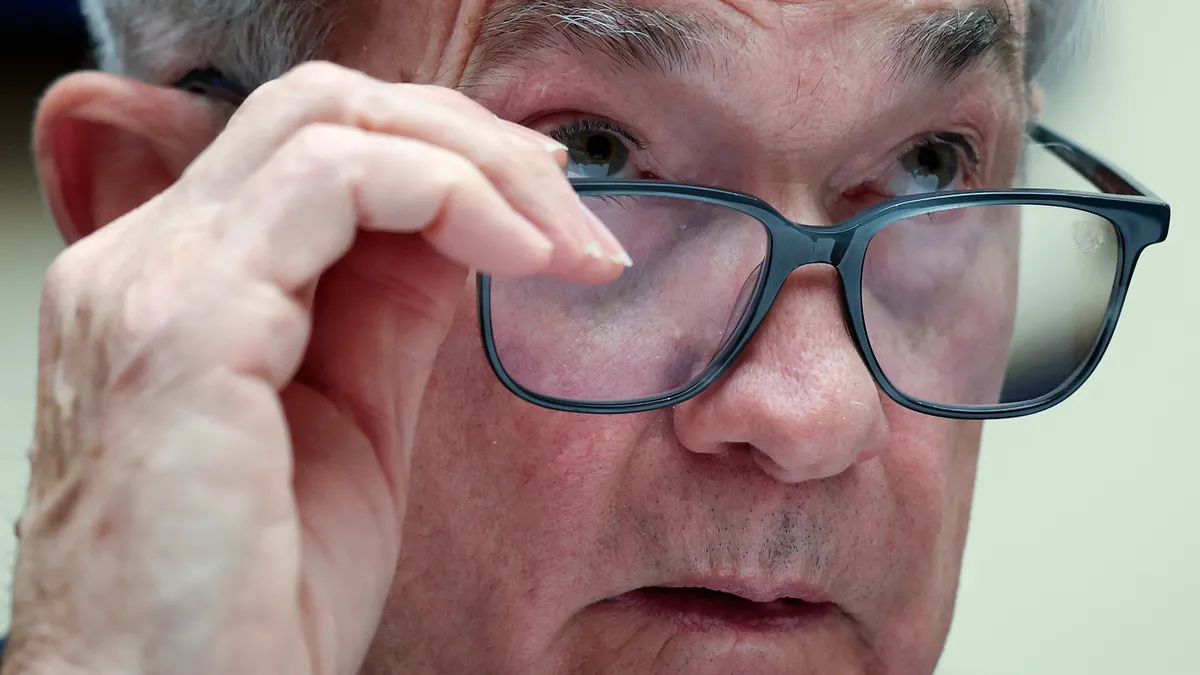Dive Brief:
- The Federal Reserve raised the main interest rate by a quarter percentage point on Wednesday and suggested that in the future it may pause its most aggressive monetary policy in four decades depending on incoming data on inflation and other factors.
- The central bank increased the federal funds rate to a range between 5% and 5.25% in its tenth consecutive hike since March 2022. Policymakers intensified their fight against inflation even though turbulence in the banking system, which began in March, flared again with the failure on Monday of First Republic Bank.
- “The committee remains highly attentive to inflation risks,” the Federal Open Market Committee said while announcing its unanimous rate decision after a two-day meeting, adding that “the U.S. banking system is sound and resilient.” Hinting at a possible pause in tightening at a scheduled June meeting, policymakers' statement on Wednesday did not include wording from their March statement suggesting further rate increases may be appropriate.
Dive Insight:
Despite its rapid withdrawal of stimulus, the Fed has so far failed to achieve a sustained reduction in price pressures, and inflation remains more than twice the central bank’s 2% target.
“Inflation pressures continue to run high and the process of getting inflation back down to 2% has a long way to go,” Fed Chair Jerome Powell said during a press conference, noting that based on its current forecast the central bank is unlikely to cut the main interest rate this year.
“We are prepared to do more if greater monetary restraint is warranted,” Powell said. “Policymakers will make that determination meeting by meeting based on the totality of incoming data,” he said, noting a “meaningful change” on Wednesday from the FOMC statement in March that indicated more tightening may be appropriate.
In light of high inflation, no policymaker favored forgoing a rate increase during this week’s meeting, Powell said.
The Fed’s preferred inflation measure — the core personal consumption expenditures price index excluding food and energy — rose 4.9% during the first quarter compared with 4.4% during the fourth quarter of 2022, the Commerce Department said Thursday.
Also, wages and salaries among private sector workers increased at a 12-month, 5.1% pace in March, a higher-than-forecast rate that underscores the risk of a mutually reinforcing upward spiral of wages and prices.
“This highlights the difficult trade-off the Federal Reserve continues to face — with inflation this persistent, the only way to get it back near 2% is by generating a recession,” BlackRock analysts said Monday in a note to clients.
“It’s why the Fed is willing to tolerate economic damage and financial cracks like we’ve seen recently in the U.S. banking sector,” they said, predicting that policymakers’ determination to quash inflation will likely dash investors’ expectations that the Fed will reduce the main interest rate this year.
Hints of damage to the economy from the withdrawal of stimulus have begun to emerge. Gross domestic product on an annual basis slowed to 1.1% during the first quarter from 2.6% during the fourth quarter, and Fed economists in March forecast a mild recession this year, reversing their December forecast for sustained growth.
Turbulence in the banking system may prompt a pullback in credit that cools economic growth, Powell said. “Banking data will show that lending has continued to grow but the pace has been slowing really since the second half of last year.”
“In principle, we won’t have to raise rates quite as high as we would have had this not happened,” Powell said. “The extent of that is so hard to predict, because we don’t know how persistent the effects will be” on credit availability.
Several other Fed officials noted before the failure of First Republic Bank that banking troubles during March may intensify a tightening in credit that began late last year.
The crisis among regional banks will probably grow, former Dallas Fed President Robert Kaplan said Tuesday in a Bloomberg Television interview.
“The banking situation may well be more serious than we currently understand,” according to Kaplan, a former senior executive at Goldman Sachs. Bank stocks have fallen since March because rising interest rates kneecapped the value of U.S. Treasuries in the banks’ portfolios, he said.
Tumult stemming from a fall in credit — which is “normally more serious" — is yet to come, Kaplan said, adding that he believed the Fed on Wednesday should pause the increase in interest rates.
The Fed has better than even odds of reducing price pressures without triggering a downturn, Powell said, noting the strength of the labor market. “The case of avoiding a recession is, in my view, more likely than of having a recession.”












